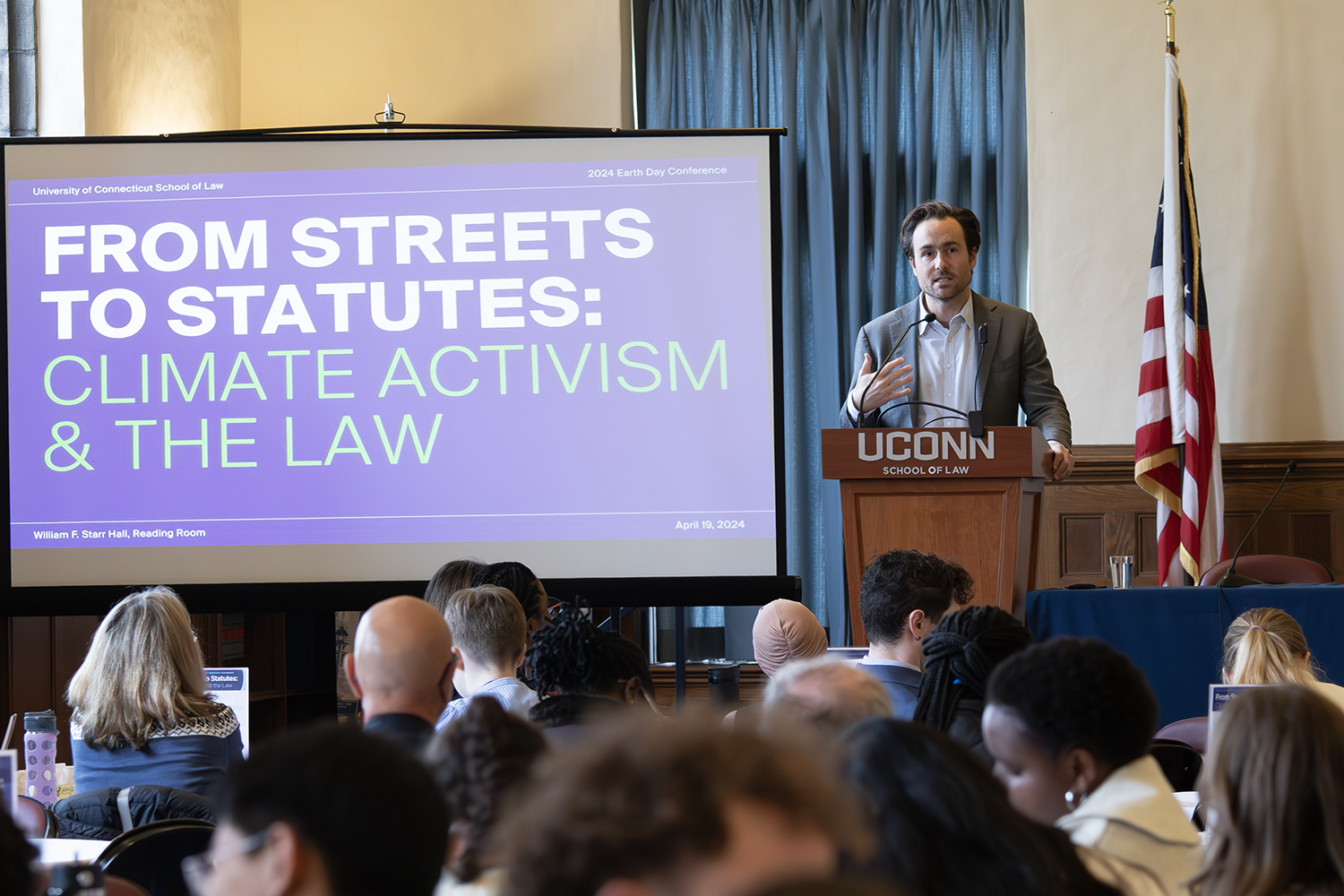 The familiar slogan of environmentalists “Think Globally, Act Locally” is becoming a surprisingly accurate descriptor of how people are reacting to climate change, according to a study underway by a political scientist in the College of Liberal Arts and Sciences.
The familiar slogan of environmentalists “Think Globally, Act Locally” is becoming a surprisingly accurate descriptor of how people are reacting to climate change, according to a study underway by a political scientist in the College of Liberal Arts and Sciences.
Mark Boyer, professor and department head of political science who specializes in global environmental politics, has found that while little is happening on either the national or international scene to cope with climate change, state and local governments are taking charge.
“The consummate global issue is being dealt with by local municipalities,” he says.
Boyer is collaborating with the Connecticut Department of Energy and Environmental Protection (DEEP, formerly the Department of Environmental Protection) on a study of what Connecticut’s 169 cities and towns are doing to prepare or adapt as climate change occurs.
Officials in Groton, for example, are worried about increasing storm surges. Using GIS data and maps prepared by UConn researchers in the College of Agriculture and Natural Resources, they have been able to document rising sea levels and show how hundreds of houses are now in 100-year-floodplains and need flood insurance.
Mansfield has promoted a clean energy program that earned it solar panels for town buildings when enough of its population switched to clean electrical energy sources.
Westport preserved a farm in a Green Village initiative intended to promote famers’ markets and the local food movement.
Boyer and Susan Williamson, a graduate student in political science, are contacting all the cities and towns in Connecticut to gather data on what they are doing that is related to climate change. Ultimately, Boyer wants to assess how coordinated and efficient Connecticut’s climate change policies are.
“We’re trying to understand in a systematic way who’s doing what.”
The data is being used to populate an online map of Connecticut that the DEP began several years ago, showing climate change actions town by town.
Data is just beginning to come in, but as the map fills out, the information it yields will let analysts see what is driving policy decisions around the state.
Mansfield, the home of the University’s main campus, “looks spectacular” on the map, notes Lynn Stoddard, environmental analyst with the DEEP, because the town is very active in environmental issues and a lot of information has been collected on its efforts.
Connecticut stands out as one of the leaders in climate change activism, Boyer says, and has since the early 2000s, along with other states in the Northeast, as well as California, Florida, and Michigan.
The issue here has been framed as a jobs creator, which has made it something that both Republicans and Democrats can support, he notes. Decreasing pollution can reduce sick days and increase productivity; and promoting the green energy industry can add jobs.
As a political scientist with an interest in environmental issues—he was a scholar-in-residence last year with UConn’s Center for Environmental Science and Engineering—Boyer is interested in the reasons Connecticut cities and towns are taking action. Some towns—particularly coastal towns—are dealing with directly perceived threats, as storms increase and water levels rise. Others have left-leaning political systems that favor environmental action.
The initial cost of going green is a big factor, however, he has found: “Sustainability is unfortunately a ‘luxury good’ for many towns, when officials worry about snow removal and school maintenance.”
On the other hand, saving energy can save money. That “resonates immediately with town officials,” says Stoddard.
Another big impetus is local champions who advocate for climate change action, she says. “It’s really at the grassroots level—people who are passionate about a cause, climate change.”


